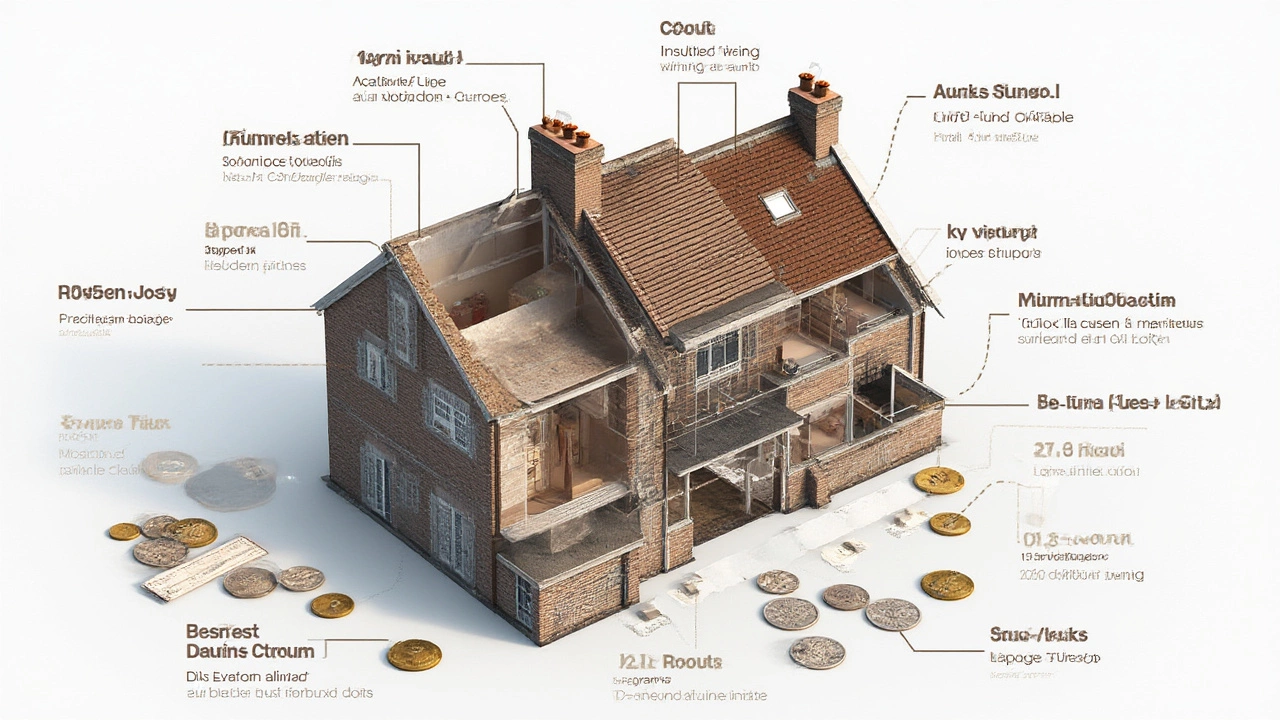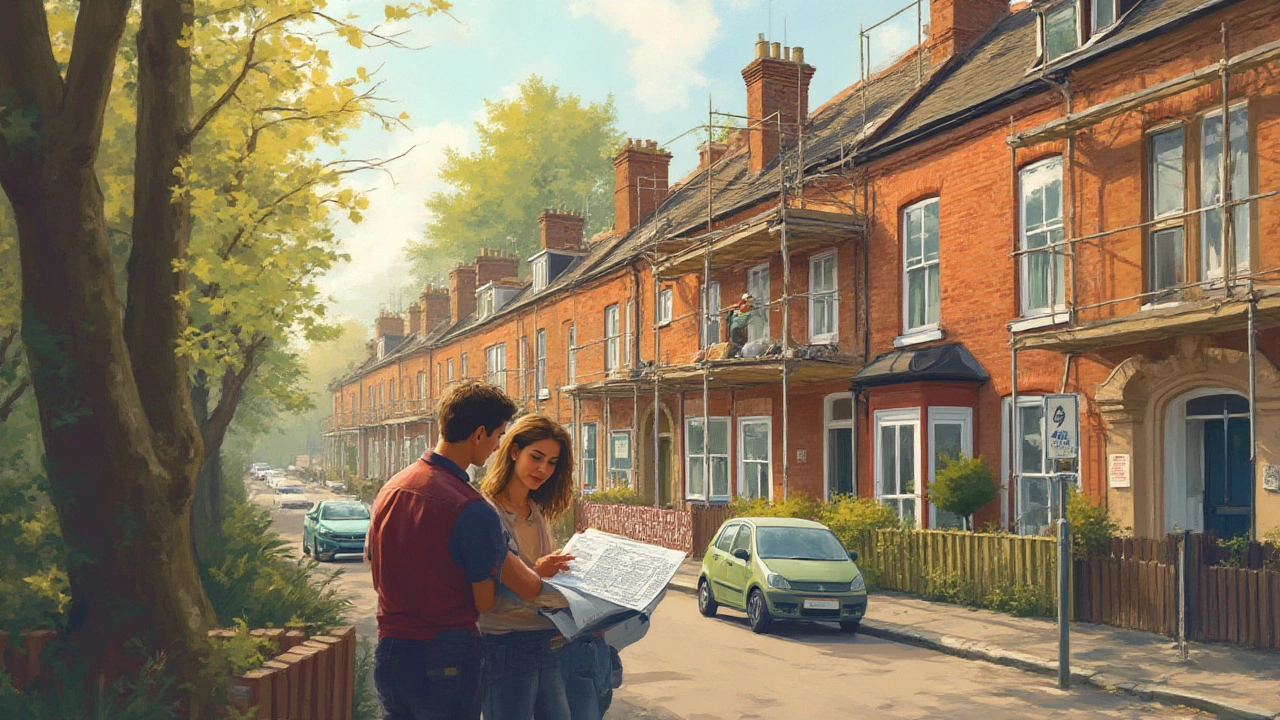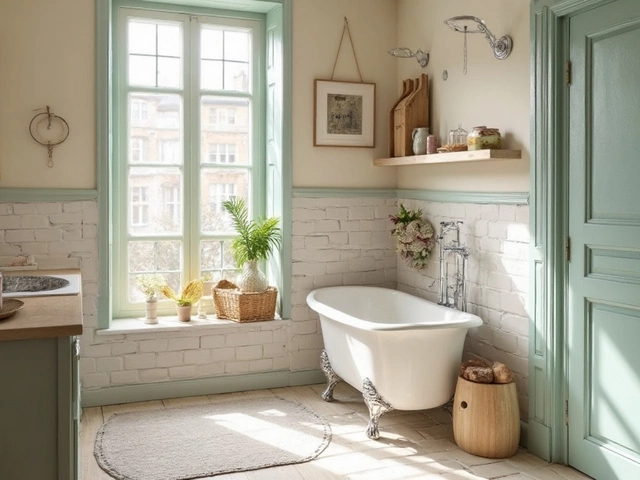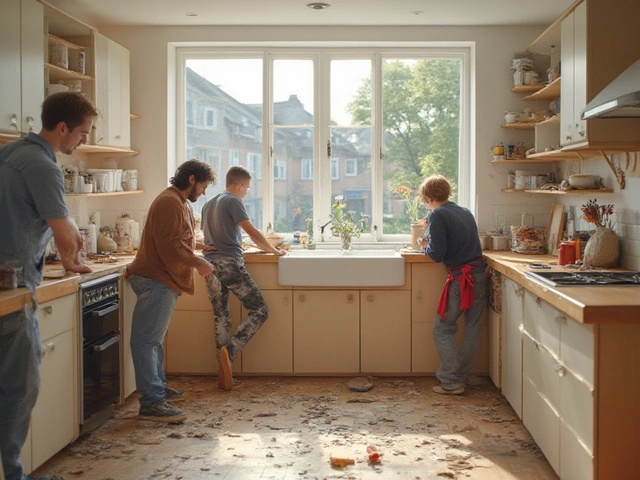Picture this: a cramped attic stuffed with holiday junk suddenly morphs into a sunlit office, a stylish teen den, or even a rent-worthy studio. The big leap from unused loft to life-changing extra space can goose your home’s value, but that initial price tag? It makes a lot of people pause. If you’re itching to know what a loft conversion really costs in 2025, buckle up—things aren’t as straightforward as you might hope. Prices climb every year, builders’ diaries are busier than ever, and the details make a bigger difference than most folks realize. But don’t worry. By the end of this read, you’ll know exactly what to expect, where to save (or splurge), and how to keep your dream project from turning into a money pit.
The Real Numbers: Average Cost of a Loft Conversion in 2025
There's no single price tag for a loft conversion, so let’s get clear on the spread. Across the UK in 2025, the average cost loft conversion sits between £45,000 and £70,000 for a typical three-bedroom home. Wondering why there’s such a wide gap? Two words: choices and complications. Here’s a peek at what drives up or down your final bill:
- Type of conversion (dormer, hip-to-gable, mansard, rooflight/Velux)
- Structural complexity (think chimneys, water tanks, low ceilings)
- Finish level—barebones utility room, swanky ensuite, or a home cinema?
- Location (London and the southeast always command a premium—sometimes 20% higher than the national average)
- Size of the loft
- Builder experience and demand in your area
If you stick with the easiest and cheapest kind—a rooflight conversion that just needs windows, insulation, and a staircase—you might scrape by at £40,000, but that’s rare these days. Most families spring for a dormer (that boxy bit added for headspace and light), and in 2025 those start at about £50,000 and climb based on your chosen bells and whistles. Mansard conversions, which almost rebuild your roof into an extra floor, easily hit the £65,000 to £75,000 range.
Look at these actual figures from a recent Homeowners' Alliance survey conducted in spring 2025:
| Conversion Type | Average 2025 Cost (£) |
|---|---|
| Rooflight (Velux) | £40,000–£50,000 |
| Dormer | £50,000–£65,000 |
| Hip-to-Gable | £55,000–£70,000 |
| Mansard | £65,000–£75,000 |
Big cities like Manchester and Edinburgh trail just behind London’s sky-high rates, but in places like Yorkshire or Wales, you might shave off 10-15%. Materials matter, too—Scandinavian oak or bespoke glass isn’t coming cheap.
Remember, none of these ballparks include a luxury finish like underfloor heating, floor-to-ceiling glazing, or a wetroom bathroom. Those extras can throw another £10,000–£20,000 into the mix, easily.
What Really Impacts the Price?
This isn’t just about size or postcode. The sneaky stuff that turns a basic estimate into a blown-out budget is what catches most people off guard. For starters, if your roof doesn’t have enough head height (2.2m is the magic number), major structural work is inbound—and it’s expensive. Architects and structural engineers must get involved, and they don’t come cheap.
Building regulations, especially after the fire safety and insulation upgrades in 2024, pile on extra requirements. You’ll need fire doors, smoke alarms on every floor, and a staircase that meets new rules—not just a rickety pull-down ladder. If your home is very old, any surprises in the roof (rot, asbestos, bats!) can mean thousands in unplanned costs.
Plumbing and electrics also trip up budgets fast. Adding a bathroom or running a new heating circuit feels small but costs big—sometimes up to £8,000 just for decent plumbing. Glass skylights and custom staircases? Gorgeous, but not exactly “budget” features.
Some folks are shocked when the quote balloons once scaffolding, skip hire, waste removal, and party wall agreements with neighbours (Londoners, you know the pain) roll into the picture. And don’t forget VAT—most builders quote prices excluding VAT, so slap another 20% on top if you’re not getting a bespoke agreement. Ouch.
Oh, and a warning—going cheap up front rarely pays off. That cut-rate builder might “forget” to mention essential tasks in their quote, only to hit you with “unexpected” extras. Always, always demand a full written breakdown before signing anything.

Money-Saving Tips Without Regrets
Alright, let’s talk about shaving off costs without ending up with a shoddy box overhead. First, don’t skip the planning phase—shelling out for a proper architectural drawing and thorough survey could save you thousands in chaos down the line. Get multiple quotes (ideally three or more), and ask to see projects builders have done this year. The trade is changing so fast, last year’s experience isn’t always relevant.
If you’re handy, some builders let you handle the decoration work—painting, flooring, or even the final fix carpentry. Taking that on could carve off £2,000–£4,000, but only do it if you know your limits. Messing up insulation or structural bits can torpedo your warranty.
Pick standardized fittings for windows, doors, and plumbing. Custom stuff looks cool but gets pricey fast. Instead, focus on simple, clever designs—big windows facing the sun, or smart built-in storage. Avoid moving heavy plumbing (like putting a bathroom at the opposite end of your house). And unless your plans are wild, stick with simple dormer designs. Complex shapes or high-end finishes eat up cash for little extra value.
About deadlines—don’t rush. A planned job takes about 8–12 weeks for an average dormer. If a builder promises less, be skeptical. Rushed jobs invite mistakes or corner-cutting, which means surprise costs later on.
If possible, schedule work outside peak summer months. Demand for builders soars May–August, but if you can handle dust in autumn or spring, you might negotiate down the quote. Energy-efficient upgrades are another sharp move—government Green Home Grants (relaunched in 2024) can cover better insulation or renewable heating, trimming your all-in cost.
Loft Conversion Value: Is It Actually Worth It?
All this money chat begs the real question: does a loft conversion pay off in 2025? Here’s the scoop. The UK property market is still wild after the sharp post-pandemic cooling and the Green Homes Push of 2024. Homebuyers crave flexible living space, and many city properties simply can’t expand sideways.
A well-built loft conversion can boost your house value by 15–20%—sometimes more in London, Bristol, or Oxford, where space is painfully tight. A recent analysis by Rightmove (March 2025) put the average gain at £80,000 for a mid-range, double bedroom plus ensuite. If you use the space yourself, you skip the moving costs (which average £12,500 in the southeast after agent and legal fees) and avoid pesky stamp duty hikes.
Beyond resale, loads of families now rent out lofts for extra income. Even a simple double bedroom with a tiny shower room pulls £700–£1,200 a month, depending on location—some Londoners do much better on Airbnb. Others set up an office, gym, or teen space, saving on gym memberships or co-working fees. It’s not an instant ROI, but within a few years, most conversions easily pay their own way and then some.
One overlooked bonus: energy savings. A fully insulated loft keeps heat in during cold months and shields against the worst of summer. With energy bills up 18% in 2025 despite the new utility cap, that improved efficiency means lower costs over time.

Key Steps: Getting Your Loft Conversion Right
Ready to make your move? Here’s the simple step-by-step so you don’t get caught out:
- Assess your loft’s potential. Is there head height above 2.2m? Any signs of leaks or heavy clutter? Can stairs go in easily?
- Find an architect or surveyor you trust. Invest in a full loft survey—they’ll spot issues before you shell out on drawings and planning.
- Talk to your local planning office. Many loft conversions fall under permitted development, especially simple dormers, but listed buildings or conservation zones need special permission.
- Line up quotes. Get at least three detailed, written breakdowns that list everything: labor, materials, VAT, waste removal, scaffolds, skip hire, and possible delays.
- Budget for surprises—add a buffer of at least 10–15% for “unforeseen” costs like timber repairs or party wall notices.
- Time your project. Book work off-peak if possible, and keep neighbours in the loop. A little goodwill goes a long way if you need extra parking or extension cables.
- Watch the build like a hawk. Stay friendly but firm. Walk the site often; don’t be afraid to ask about changes in cost or timing.
- Final inspection and snag list. Don’t pay final balance until you’ve checked all the work and made sure regulations are met.
No matter your aim—a workspace, more bedrooms, or rental income—a smart loft conversion opens up a world of options. Just go in with eyes wide open on costs, keep a clean paper trail, and resist shortcuts. That dusty attic might just become the best spot in your whole house.





